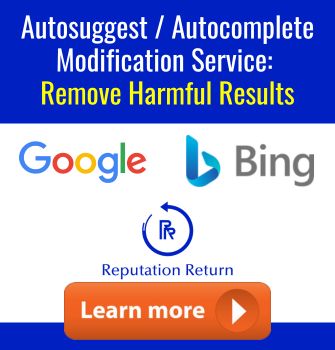In business, a company’s reputation is like a delicate piece of art—valuable yet fragile. A reputation crisis can hit when least expected, threatening to unravel years of dedication and trust-building. When faced with such hurdles, having a concrete plan becomes crucial to manage the situation effectively and ensure reputation recovery.
What Is a Company’s Reputation?
A company’s reputation is essentially the story told by its stakeholders—customers, investors, employees, and the public. It reflects how they perceive the company’s actions, values, and communication. This reputation is built over time through consistent performance, transparent communication, and staying true to core values. A good reputation is the bedrock of customer trust and fosters strong relationships with business partners and major stakeholders.
Reputation management is more vital than ever. Social media and online platforms amplify public opinion, making it essential for companies to proactively manage their image. A strong reputation fosters trust and customer loyalty, while a damaged one can lead to significant challenges that require effective strategies for recovery.
What Is a Crisis?
A crisis is an unexpected event that disrupts normal operations and threatens an organization’s reputation and stakeholder trust. Common crises include operational failures, cybersecurity breaches, or social media backlash. These events can lead to reputational damage if not handled properly, impacting the company’s market value and public perception.
Crises can arise from product recalls, unethical practices, or poorly received marketing campaigns. The impact of these events hinges on the organization’s response. Proactive crisis communication and preparedness are key to mitigating damage and maintaining trust.
How Does a Crisis Affect a Company’s Reputation?
Crises can severely impact a company’s reputation, causing public perception and stakeholder trust to erode rapidly. The effectiveness of the company’s immediate response plays a critical role in determining the extent of the damage. In today’s fast-paced media environment, the speed and tone of a company’s response are crucial.
Short-term effects of a crisis can include:
- Loss of trust
- Negative media coverage
- Decline in sales
Long-term effects may include:
- Persistent challenges to brand image
- Changes in customer loyalty
- Shifts in market share
Steps to Rebuild Company Reputation After a Crisis
Rebuilding a company’s reputation requires a strategic, thoughtful approach to regain trust and credibility. Here are the essential steps:
1. Acknowledge and Take Responsibility
The first step is acknowledging the crisis openly and taking responsibility for any mistakes. This demonstrates accountability and helps rebuild trust. For example, when a major airline faced backlash overbooking, it publicly admitted its error and outlined a plan to improve its practices.
2. Communicate Openly and Transparently
Clear and honest communication is vital during a crisis. Share regular updates through multiple channels, including social media and press releases, to keep stakeholders informed. Johnson & Johnson’s response during the Tylenol crisis—issuing timely updates and prioritizing consumer safety—is a classic example of effective crisis communication.
3. Implement Changes and Prevent Recurrence
After addressing the immediate crisis, implement changes to prevent similar issues in the future. This may include restructuring internal processes, improving safety protocols, or enhancing transparency. Companies can demonstrate their commitment to accountability and growth by taking visible steps to improve.
4. Engage with Stakeholders
Building trust requires active engagement with stakeholders, including key and primary stakeholders. Conduct surveys, host community forums, and interact on social media to address concerns and gather feedback. This shows that the company values stakeholder input and is committed to improvement.
5. Monitor and Address Negative Feedback
Proactively monitoring public sentiment helps companies respond quickly to concerns. Using tools like Brandwatch or Hootsuite, organizations can track feedback in real-time and address issues before they escalate. Quick, personalized responses can help shift public opinion positively, turning negative reviews into opportunities for improvement.
6. Highlight Positive Contributions
While addressing challenges, emphasize the company’s positive aspects. Share stories of community involvement, ethical practices, and customer successes. This helps balance negative perceptions and reinforces the company’s core values and brand image.
Preparing for Future Crises
Being prepared can minimize the impact of future crises. Here are key strategies:
Have a Crisis Management Plan
A robust plan outlines communication protocols, response timelines, and evaluation processes. Ensure all team members understand their roles during a crisis to facilitate a swift and coordinated response. This proactive approach helps maintain transparency and control over the situation.
Train Employees on Crisis Communication
Regular training equips employees with the skills to handle challenging situations effectively. Workshops, simulations, and e-learning modules can enhance readiness and ensure consistent messaging during crises. This helps maintain a positive light on the brand’s reputation during difficult times.
Monitor Potential Issues
Use monitoring tools to identify and address concerns early. By staying ahead of potential issues, companies can prevent minor problems from escalating into full-blown crises. This includes keeping an eye on data breaches, insider trading, and other potential threats to corporate governance.
Learn from Past Experiences
Conduct post-crisis evaluations to identify areas for improvement. Incorporate lessons learned into future planning to strengthen resilience and enhance response strategies. This continuous improvement approach is essential for building trust and ensuring a good reputation.
Conclusion
Crises are inevitable, but their impact on a company’s reputation can be managed and mitigated with the right approach. By acknowledging issues, communicating transparently, and taking proactive steps, businesses can rebuild trust and emerge stronger. Consistent effort, accountability, and preparedness are the cornerstones of effective reputation management. Companies can shape public perception and maintain a positive brand reputation even in the face of adversity by focusing on strong marketing, clear communication, and a commitment to core values.















